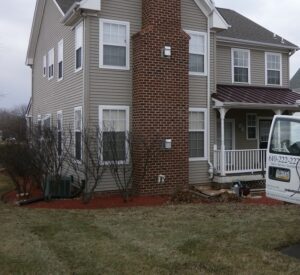Radon FAQ

Got questions about radon? Radon-Rid, LLC is here to give you the answers. Our radon FAQ will help you learn more about radon, its effects, and how you should take action in your home to prevent radon from seeping in and keep you and your family safe.
What Is Radon?
Radon is a radioactive gas formed through the natural decay of thorium and uranium in the soil, rocks, and water. Radon is colorless, odorless, and tasteless. Radon is usually released in minute quantities from the decaying process of thorium and uranium, however, because those two elements are the most common radioactive elements on Earth, and because of their long half-lives, radon is always present.
What Causes Radon in a House?
Most instances of radon in homes is from the soil and rocks underneath houses. Radioactive elements in the ground and stone naturally break down and decay over time, without interference from people. Those elements release radon into the soil. Then the radon rises through the soil and into any buildings above.
How Does Radon Enter Homes?
Due to being a naturally occurring gas found in the ground, radon typically gets into homes through the foundations. Radon can seep through cracks, construction joints, drains, etc. Radon can also enter a house through well water, but the amount is minor compared to the amount entering through the foundation.
What Are The Symptoms Of Radon In Your Home?
While radon is undetectable with human senses, some symptoms can be a sign that lung cancer from radon exposure has occurred and that radon is present in your home. These symptoms include the following:
- Persistent cough
- Hoarseness
- Wheezing
- Shortness of breath
- Coughing up blood
- Ongoing Chest pain
- Frequent infections like bronchitis and pneumonia
The effects of radon are also long-lasting, and these symptoms may only arise after years of exposure. Which is why the best way to know if your home is affected by radon is to have your home tested.
What Are The Effects of Radon?
Radon is the second leading cause of lung cancer in the United States. When you inhale radon, the lung tissue and cells become damaged, which increases the risk of lung cancer. A higher concentration of radon leads to a greater chance of lung cancer. The symptoms of lung cancer due to radon take years to show up. Radon can also cause or exacerbate other lung conditions, especially in children.
Radon has also been linked to an increased chance of leukemia, but current evidence has yet to be conclusive.
Can Radon Kill You?
Radon is a deadly gas responsible for around 21,000 lung cancer deaths per year in the United States. What makes radon so deadly is that whenever people inhale radon, the gas damages and kills cells and tissue within their lungs. Those damaged, dead cells can lead to lung cancer, which can lead to death.
What Is A Safe/Unsafe Level of Radon?
Radon concentration in air is measured in units of picoCuries per Liter (pCi/L). No official “safe” level of radon concentration exists as no level is desirable, but the national average of outside radon levels is 0.4 pCi/L, although the level may be as high as 0.75 pCi/L depending on your geographic location. The Environmental Protection Agency (EPA) suggests homeowners take action to reduce radon in their homes, but especially if their homes test at 4 pCi/L or above.
Where Is Radon Most Common?
Radon is present everywhere in the United States, with levels differing from state to state. The northeastern and Midwest regions are where radon is most prevalent in the United States. States such as Pennsylvania, North Dakota, and Idaho have exceptionally high radon levels. Radon levels can also vary within each state. For example, radon is more prevalent in eastern Pennsylvania than the west side of the state.
You can find out the radon levels of your county here.
Should I Test My House for Radon?
Yes, getting your house tested for radon is important for learning whether you are at risk. Because radon is undetectable to human senses, testing is also the only way to know the radon concentration level in your home. In addition to this radon FAQ, we have a whole page about radon testing methods here. We suggest getting a professional to conduct the testing, as he/she will have all of the necessary training and will advise you on the next steps in the process.
Can I Remediate Radon in My Home?
Yes, radon remediation is important if you have done short-term and long-term radon testing in your home and found radon levels to be above 4 pCi/L. The most common remediation method used is sub-slab depressurization, but an expert can help you choose the best system for your home’s construction.
How Much Does Radon Remediation Cost
Several factors affect the cost and type of radon mitigation system in your home, such as the house age, design, construction, even aesthetic choices, and more. You can learn more about radon remediation, cost, and methods here.
Contact Radon-Rid, LLC for Radon Gas Testing and Remediation
Radon-Rid, LLC is a full-service radon testing and remediation company that specializes in radon detection and safety. Our radon testing and remediation specialists are here to provide you peace of mind and remove the risk of radon on your property. If you found this radon FAQ helpful and want to learn more about our services or schedule a consultation, contact us today.
We Want to Help
"(required)" indicates required fields
Radon – The Silent Killer
Radon In Your Home
- Learn More About Radon Levels in Your County
- Take a few minutes to browse our Get To Know Radon Online Presentation.
- When you are finished, be sure to tell a loved one about our testing programs offered in Berks, Chester, Delaware, Lancaster, Montgomery & Philadelphia Counties.